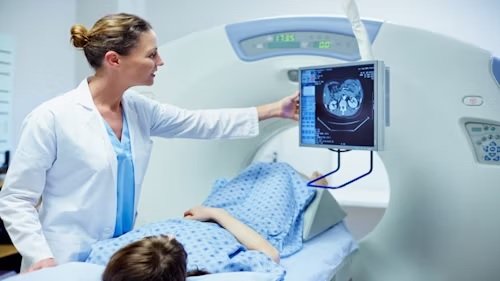How the Best Embedded Systems Design Can Boost Patient Care?

Healthcare is one of the fastest-moving industries, and innovation has an integral role in significantly improving patient outcomes and the level of care. One field where development is gaining momentum is the embedded product design of embedded systems – small specialized computers that are integrated with various devices. Embedded systems are shifting the paradigm of vast aspects of patient care, from monitoring vital signs to assisting with administrative duties. The more sophisticated the embedded systems are, the better healthcare becomes; it’s straightforward. For instance, consider the progress we would make if medical devices could seamlessly communicate with each other, sharing critical information in real-time. Or if a doctor could access a patient’s complete medical history with the push of a button. This is an accurate picture of the present and future possibilities of embedded systems in the healthcare ecosystem. For example, computers that can efficiently run specific processes are built into a variety of medical instruments, such as diagnostic equipment or life support.
1. Real-Time Patient Monitoring
The most critical benefit of embedded systems in this sphere is the real-time monitoring of patients. They can be embedded into some devices, for instance, patient monitors, to control the vital signs, such as a heart rate, blood pressure, blood oxygen saturation, and so on, all the time . As a result, the regular presence of specialists is not required. Since such monitoring is conducted in real-time, it is beneficial in terms of real-time manifestation of abnormalities or worrisome patterns. Therefore, embedded systems allow specialists to react rapidly, perhaps saving a life. Furthermore, one may set up some kind of alerting mechanism, or the device can even send an alarm if some thresholds are crossed First Aid Training Burnaby.
2. Enhanced Diagnostic Accuracy
In conclusion, embedded systems can greatly enhance the accuracy of diagnostic examinations using advanced algorithms and vast amounts of data. Embedded systems installed in various medical imaging equipment and tools such as CT or MRI machines can significantly improve the quality of images and generate more detailed and precise embedded visualizations that allow accurate and early diagnosis. Additionally, embedded systems can study and allow storing and analyzing large volumes of data such as patients; medical history, lab tests, and imaging studies to detect patterns and provide meaningful data to healthcare providers. Such accuracy and level of analysis can allow accurate decisions that can empower clinicians to make accurate decisions and generate treatment plans that improve patient outcomes.
3. Streamlined Data Management
Data management in the health care sector is important to facilitate the continuity of care and also enlightened decision-making. The use of embedded systems has significantly simplified the data management process by facilitating interoperability and communication between different medical devices and systems . Integration ensures all patient data are stored securely and can be accessed or shared among the various medical facilities and practitioners. For example, integration ensures a provider receives the full medical history of a patient without the need for redundant tests or procedures and reduces the chances of errors or omissions.
4. Improved Medication Management
The results are disastrous for patients who are exposed to medication errors, from side effects to fatal reactions. We might avoid these by including advanced medication management features on devices like infusion pumps or automatic dispensing systems in embedded systems. These incorporate patient data such as allergies or present prescriptions to recognize potential contradictions and correct amounts and administration to remove the risk of human error and enhance patient safety.
5. Remote Patient Monitoring
While the researchers above reviewed embedded systems as applied in health monitoring, Pelayo et al. focus on chronic disease management to reduce hospital readmissions. This objective is accomplished by remote health monitoring along with real-time vital sign data transmission to health providers for monitoring and feedback . Notably, embedding systems are interconnected to provide data transmission to a registered nurse’s handheld device for analysis and feedback to the patient. Medical interventions are based on periodic blood pressure, oxygen saturation, and heart rate values that reduce unnecessary admissions to hospitals. Furthermore, this intervention decreases health expenses related to chronic diseases and improves the patient’s life.
6. Efficient Workflow Management
Efficient workflow management is essential to promote the provision of timely and high-quality patient care within the fast-paced and busy setting of the healthcare facility. Embedded systems can serve as valuable tools to assist in workflow optimization as they are well-suited to automate numerous administrative tasks and enhance the interaction between clinicians and other staff. For example, embedded systems may become a part of the EHRs and patient scheduling tools to allow access to a provider or a staff member and update patient information in real-time . As a result, the amount of time spent on paperwork is reduced, and the risk of errors is minimized.
7. Telemedicine and Virtual Care
The necessity of such systems grew especially during the COVID-19 pandemic, where many people have not been able to go to the hospital, clinic, or other medical institutions. The emergence of telemedicine and other virtual care systems helped them receive necessary medical attention. Embedded systems often form the basis for such advanced embedded technology: they help to organize video conferences, transfer data safely, and monitor patients remotely. Such systems allow the healthcare provider to consult the patients virtually, analyze data without their physical presence, and provide necessary consultation or recommendation without risking the patient’s exposure to an infectious disease.
8. Enhanced Training and Education
Additionally, embedded systems can make significant contributions to training and education for healthcare professionals. Using simulations and virtual reality environments facilitated by embedded systems, doctors and medical personnel can perform various procedures and develop skills in a risk-free environment. Experience gained from these exercises can help develop critical skills, enhance decision-making capacity, and generally prepare medical personnel for real-life encounters, ensuring better outcomes for patients and better performance by the health professional.
9. Personalized and Precision Medicine
Nowadays, precision medicine prioritizes developing unique treatment plans for each patient based on their personal genetic, environmental, lifestyle, and other personal factors. Thus, when embedded devices can collect and analyze large volumes of patient data from various sources, the precision medicine principles can be applied more effectively. The utilization of superior algorithmic and machine learning tools enables the identification of patterns or correlation and potential risk factors, assisting professionals in creating personalized treatment- or disease-management tactics that address individual needs.
10. Cybersecurity and Data Privacy
In conclusion, the integration of embedded systems in the healthcare sector means cybersecurity and data privacy are critical factors to consider. Developers should include encryption, access controls, and secure communication protocols when designing embedded systems to protect patient information’s privacy and integrity. Additionally, regular software updates and patches are crucial in ensuring such systems are secure and minimizing their vulnerabilities.
Conclusion
However, from real-time monitoring and diagnostic capacitation to straightforward data management and remote patient monitoring, there is one thing that makes embedded systems transform the way patients get the health services they need – digital design in vlsi for embedded systems. Furthermore, the systems are capable of streamlining workflow through the integration of multiple medical facilities, enabling telemedicine and virtual care, improving medical training and education, and facilitating personalized and precision medicine.














